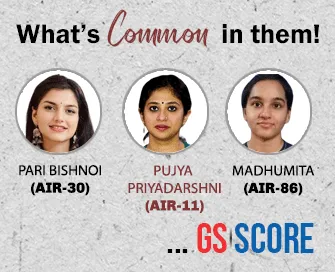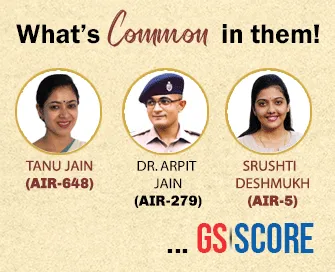

31st May 2025 (11 Topics)
Mains Issues
Context
A Parliamentary Committee will meet officials from the Education Ministry and minority institutions like AMU and JMI to review OBC representation in admissions and employment. The focus is on assessing and potentially enhancing quotas for Muslim OBCs to ensure equitable inclusion.
Parliamentary Oversight on Reservation Policies for Muslim OBCs in Minority Institutions
- Mandate and Jurisdiction of the Parliamentary Committee:
- Mandate: The Committee on the Welfare of OBCs is entrusted with the task of monitoring, evaluating, and making recommendations on policies and programmes that affect the social, educational, and economic development of OBC communities.
- Focus on Minority Institutions: Given that AMU and JMI are minority educational institutions protected under Article 30(1) of the Constitution, they are exempt from certain central reservation mandates. This has led to the committee scrutinizing the extent to which these institutions provide equitable opportunities to OBCs, especially from the Muslim community.
- Key Objective: The committee’s inquiry centres around the representation of Muslim OBCs in admission and employment, examining whether their current inclusion mechanisms are adequate and constitutionally aligned.
- Existing Reservation Policies in AMU and JMI:
- Aligarh Muslim University (AMU): AMU does not currently have a formal reservation policy for admissions or employment based on religion or socio-economic category, except for a provision favouring students from schools run by the university.
- Jamia Millia Islamia (JMI): JMI implements a tiered reservation policy in admissions:
- 30% of seats are reserved for Muslim candidates.
- 10% for Muslim women.
- 10% for Muslim candidates belonging to either OBC or Scheduled Tribe backgrounds.
However, the university does not currently offer reservations in employment for SCs, STs, or OBCs, as confirmed by a parliamentary response.
- Inconsistencies in Reservation Frameworks: The disparity in admission and employment policies between AMU and JMI underscores the divergent interpretations of institutional autonomy and the implementation of affirmative action within minority institutions.
- Socio-political Implications and Policy Complexities:
- Constitutional Protection vs. Social Justice: Minority institutions are governed by Article 30(1), which grants them the right to establish and administer educational institutions of their choice. However, this constitutional autonomy must be harmonized with the broader goal of ensuring social justice and equitable access for backward communities.
- Need for Muslim OBC Inclusion: Muslim OBCs, as recognized in the central list of backward classes, encounter socio-economic challenges similar to those of Hindu OBCs. Hence, their inclusion in affirmative action policies within minority institutions is critical for ensuring inclusive development.
- Policy Gaps and Legislative Oversight: The current lack of mandated reservations for Muslim OBCs in these institutions presents a policy lacuna. The Parliamentary Committee's recommendations may potentially pave the way for more inclusive frameworks without infringing upon minority rights.
Way Forward:
- Policy Harmonization: Formulate a national-level framework encouraging minority institutions to voluntarily implement reservations for Muslim OBCs. This would uphold the spirit of Article 30 while advancing social justice.
- Evidence-Based Planning: Undertake comprehensive socio-economic and educational surveys focused on Muslim OBC communities to enable targeted, data-driven affirmative action policies.
- Strengthened Oversight Mechanisms: Institutionalize periodic parliamentary reviews and audits of minority institutions to ensure accountability and transparency in their outreach and representation strategies.
- Institutional Support and Outreach: Facilitate infrastructure development, financial assistance, and counselling services in minority institutions to improve access and retention of marginalized students.
- Legal and Administrative Clarifications: The Ministry of Education should issue guidelines that balance minority rights with affirmative action mandates. These guidelines should aim to unify the goals of diversity, constitutional autonomy, and social inclusion.
Constitutional Provisions Related to Reservation
Key Supreme Court Judgments Related to Muslim Reservation
|
PYQ:Q. "Discuss the constitutional provisions and challenges associated with reservation policies in minority educational institutions in India. How can social justice be ensured without compromising minority rights?" (2019) |


Mains Issues
Context
The Ministry of Education has raised concerns over rising private school enrolment alongside declining government school participation in states like Andhra Pradesh, Telangana, and Uttarakhand. Despite more government schools, student preference is shifting towards private unaided institutions, posing challenges for public education schemes like Samagra Shiksha and PM-POSHAN.
Rising Private School Enrolment vs Government School Decline
1. Overview of Enrolment Trends- Increasing Private School Enrolment:
- Steady rise in private school admissions noted in Andhra Pradesh, Telangana, Uttarakhand, Tamil Nadu, and other states.
- Private schools account for a higher percentage of enrolment despite fewer numbers compared to government schools.
- Declining Government School Enrolment:
- Government schools constitute a majority of schools but face falling student numbers.
- Examples: Andhra Pradesh government schools form 73% of schools but only 46% enrolment; Telangana 70% schools but 38.11% enrolment; Uttarakhand 72% schools but 36.68% enrolment.
- Private school enrolment stands at around 36% of total enrolment nationwide.
- Variation across states, with some like Tamil Nadu and Maharashtra showing similar trends.
- Post-COVID years have seen a shift, with data cleansing exercises and private school preference as possible reasons.
- Increased aspirations and demand for perceived quality in private schools.
- Possible perception of better infrastructure, teaching standards, or facilities in private schools.
- Impact of PM-POSHAN scheme discussions revealing lower uptake of midday meals in government schools as an indicator of reduced attendance.
Comprehensive Analysis:
- The shift of enrolment from government to private schools highlights systemic challenges in public education such as infrastructure inadequacies, quality of teaching, and perception issues.
- Despite greater accessibility to government schools in terms of numbers, enrolment reflects parental preference driven by aspirations for better educational outcomes.
- The phenomenon risks increasing educational inequality, as economically disadvantaged children may be left behind if government schools weaken.
- Government expenditure on schemes like Samagra Shiksha and PM-POSHAN is substantial, yet the declining enrolment undermines effective utilization of funds.
- The COVID-19 pandemic may have accelerated shifts due to school closures and changes in perception of government school safety or quality.
- States’ data cleansing exercises indicate that part of enrolment drop may be due to administrative adjustments, but underlying trends remain concerning.
Way Forward
- Improve Quality and Infrastructure: Targeted investments in teacher training, infrastructure upgrades, and digital tools to enhance learning outcomes in government schools.
- Branding and Community Engagement: Initiatives to rebuild trust in government schools through community involvement and showcasing success stories.
- Policy Reforms: Introduce accountability measures for government schools and incentivize attendance.
- Address Socio-economic Barriers: Strengthen support services such as midday meals, transport, and scholarships to retain disadvantaged students.
- Data-driven Approach: Continuously monitor enrolment trends using UDISE+ and other tools to assess impact and refine strategies.
- Public-Private Partnerships: Collaborate with private sector and NGOs to uplift government schools while maintaining affordability and accessibility.
PM-POSHAN Scheme
|
PYQ:Q. “Examine how nutritional schemes like POSHAN Abhiyan and Mid-Day Meal contribute towards child development and reducing malnutrition in India.” (2018) |


Mains Issues
Context
The Government of India has met its revised fiscal deficit target of 4.8% of GDP for the financial year 2024–25, despite lower-than-expected receipts from income tax and disinvestment, as per provisional data released by the Controller General of Accounts.
Fiscal Deficit Contained at 4.8% in FY25 Despite Revenue Shortfalls
Fiscal Deficit Achievements: FY2024–25
- The Controller General of Accounts (CGA) has reported that the fiscal deficit stood at ?15.77 lakh crore, amounting to 8% of GDP, exactly matching the revised estimates set out in the Union Budget.
- This outcome reflects a careful balance between expenditure control and revenue mobilisation, amid economic uncertainties and slower-than-expected asset monetisation.
Components of Fiscal Deficit Performance
1. Revenue Realisation- Total Revenue Receipts: ?30.78 lakh crore (97.8% of RE)
- Tax Revenue:
- Corporate Tax: ?9.87 lakh crore (+0.7% over RE)
- Income Tax: ?11.83 lakh crore (?6% below RE)
- Non-Tax Revenue: Realised but details not disclosed explicitly in the release.
- Tax Revenue:
- Capital Receipts:
- Miscellaneous Capital Receipts (incl. disinvestment): ?17,202 crore (52.1% of RE)
- Disinvestment Realisation: ?10,131.32 crore, significantly below target
- Total Expenditure: ?46.55 lakh crore (97.8% of RE)
- Indicates adherence to spending targets without fiscal slippage.
Structural Insights for Reform"
1. Disinvestment Underperformance- Recurrent issue over multiple fiscal years.
- Reflects: It reflects execution delays, Market volatility, Strategic hesitation and institutional bottlenecks, Weak investor sentiment for certain PSUs
- Shortfall in income tax despite efforts at digital compliance.
- Points to: Persistent informal economy, Tax evasion, Inadequate widening of the direct tax net
- While corporate tax slightly exceeded estimates, it may not remain resilient under external shocks or slowdowns.
Implications for Fiscal Policy and Macroeconomic Stability
Positive Takeaways
- Fiscal discipline maintained amid headwinds.
- Strengthens India’s macroeconomic credibility with institutions like IMF, credit rating agencies, and foreign investors.
- Reinforces adherence to the FRBM Act targets for medium-term fiscal consolidation.
Concerns
- Revenue vulnerability continues to limit fiscal space for development spending.
- Shortfalls in capital receipts may force increased borrowing, affecting debt sustainability in the long run.
- Reliance on expenditure compression rather than robust revenue generation raises questions about long-term growth-supportive fiscal strategy.
Way Forward
1. Institutional Reform in Disinvestment- Establish a Disinvestment Execution Authority with streamlined autonomy.
- Adopt block deals and strategic sales via transparent channels (like CPSE ETF models).
- Deepen the integration of GST with Income Tax databases.
- Use AI-based analytics for compliance monitoring.
- Rationalise exemptions and plug litigation delays in high-value tax cases.
- Enact the recommendations of the FRBM Review Committee (N.K. Singh Report, 2017):
- Fiscal Council for independent oversight.
- Focus on debt-GDP ratio as the anchor metric.
- Prioritise productive capital expenditure over revenue expenditure.
- Institutionalise outcome budgeting across ministries.
- Apply zero-based budgeting to weed out obsolete schemes.
Fiscal Responsibility and Budget Management (FRBM) Act, 20031. Background and Objective:
2. Key Provisions:
3. Amendments:
4. Escape Clauses and Flexibility:
5. Significance:
6. Challenges and Criticism:
|
PYQ:Q. Explain the rationale behind the FRBM Act and discuss the recommendations made by the FRBM Review Committee to ensure fiscal discipline." (2020) |


Prelims Articles
Context
The Indira Gandhi National Centre for the Arts (IGNCA) recently organized a special lecture to mark the 300th birth anniversary of Devi Ahilyabai Holkar. The event celebrated her remarkable leadership, administrative reforms, and cultural contributions, reaffirming her legacy as an exemplary woman ruler in Indian history.
Devi Ahilyabai Holkar (1725–1795)
1. Biographical Overview- Birth: 31 May 1725, village Chaundi, Maharashtra.
- Death: 13 August 1795, Maheshwar (age 70).
- Dynasty: Holkar dynasty of the Maratha Confederacy.
- Reign: 1767 – 1795.
- Capital: Maheshwar (on the banks of the Narmada River).
- Known As: “The Philosopher Queen” – a title given by historian John Keay.
- Conducted daily durbars to directly address grievances of common citizens.
- Noted for impartial and strict justice: Sentenced her own son to death for a capital crime.
- Abolished orthodox customary laws: Notably repealed the law confiscating property of childless widows, ensuring women's property rights.
- Promoted textile industry: Established Maheshwar as a textile hub, famous for Maheshwari sarees.
- Received military training under her father-in-law Malhar Rao Holkar.
- Personally led armies into battle, demonstrating tactical and leadership capabilities.
- Appointed Tukojirao Holkar as the Commander-in-Chief of the army.
- Maintained peace and stability in Malwa region despite the larger turbulence in Maratha polity.
- Turned Maheshwar into a cultural capital: Patronized poets like Moropant, Shahir Ananta Gandhi, and Khushali Ram.
- Initiated an extensive temple construction and renovation program across India.
- Major Contributions:
- Rebuilt the Kashi Vishwanath Temple (1780) in Varanasi after it was destroyed by Aurangzeb.
- Built temples, dharmashalas, and wells in sacred cities: Ayodhya, Nasik, Mathura, Haridwar, Kanchi, Badrinath, Rameswaram, and more.
- Major Contributions:
- Promoted Hindu pilgrimage infrastructure across India—rare for a regional ruler.
- Revered as a model of ideal governance, social justice, and public welfare.
- A rare example of female sovereign leadership in 18th-century India.
- Her rule is often cited as an example of good governance rooted in dharma and welfare orientation.
- Memorials and statues across India (Indore, Maheshwar, Mumbai, etc.).
- Her life is part of textbooks and public discourse as an example of women in leadership.


Prelims Articles
Context
The United Nations Office for the Coordination of Humanitarian Affairs (OCHA) has issued a grave warning that the entire population of Gaza is at risk of famine due to severe shortages of humanitarian aid. Despite Israel authorizing some aid trucks, bureaucratic and security barriers have restricted adequate supplies from entering Gaza, exacerbating an already dire humanitarian crisis.
Gaza Strip:
Geographical Location:
- The Gaza Strip lies in the eastern Mediterranean basin, bordered by Egypt (southwest), Israel (north and east), and the Mediterranean Sea (west).
- It is one of the world’s most densely populated areas, with over 2 million people residing in a very small territory.

Characterization:
- Often described as an “open-air prison” due to severe restrictions on movement, limited access to resources, and harsh living conditions imposed by surrounding borders.
Historical Background:
- 1967 Six-Day War: Israel captured Gaza from Egypt and began military occupation.
- 2005 Disengagement: Israel withdrew settlements from Gaza but maintained control over borders, airspace, and maritime access.
- 2007 Hamas Takeover: Following Hamas’s rise to power, Israel and Egypt imposed a strict blockade citing security concerns.
Border and Access Points:
- Gaza is surrounded by walls on three sides; the Mediterranean Sea forms the fourth side.
- Three key border crossings:
- Karem Abu Salem Crossing (Israel-controlled): Primarily for goods.
- Erez Crossing (Israel-controlled): Mainly for people.
- Rafah Crossing (Egypt-controlled): Main entry/exit point with Egypt.
United Nations Office for the Coordination of Humanitarian Affairs (UN OCHA)Establishment:
Historical Context:
Key Tools and Mechanisms:
Funding Mechanisms:
|


Prelims Articles
Context
The Ministry of Statistics and Programme Implementation (MoSPI) released Provisional Estimates (PEs) of Gross Domestic Product (GDP) and Gross Value Added (GVA) for FY2024-25. These estimates indicate a deceleration in both nominal and real GDP growth, revealing critical trends in sectoral performance, especially manufacturing, ahead of the final estimates in subsequent years.
Definitions and Concepts:
- GDP (Gross Domestic Product): Measures the total monetary value of all final goods and services produced within a country in a given year, including taxes minus subsidies.
- GVA (Gross Value Added): Captures the value added by each sector in the economy before the inclusion of taxes and deduction of subsidies.
- Relation: GDP=GVA+Net Taxes (Taxes – Subsidies)\text{GDP} = \text{GVA} + \text{Net Taxes (Taxes – Subsidies)}GDP=GVA+Net Taxes (Taxes – Subsidies)
- Nominal GDP: Calculated at current market prices, includes inflation.
- Real GDP: Adjusted for inflation, represents actual increase in production.
- Provisional Estimates (PEs): Based on data up to Q4; subject to revisions as more complete data becomes available over the next two years.
Key Figures from FY2024-25:
- Nominal GDP: ?330.7 lakh crore (USD $3.87 trillion using ?85.559/$ exchange rate)
- Growth: 8% YoY — Third slowest since 2014; Sixth slowest since 1991 economic liberalisation.
- Real GDP: ?188 lakh crore
- Growth: 5% YoY — down from 9.2% in FY24
- Real GVA Growth: 4% vs 8.6% in FY24
- Agriculture CAGR (since 2019-20): 72%
- Manufacturing CAGR: 04%
- Service Sector CAGR: Below 6%
Sectoral Insights and Concerns:
- Manufacturing growth lags behind agriculture, a cause for concern amid persistent urban unemployment, particularly among youth.
- Weak manufacturing output contradicts the ambitions of the Make in India initiative (2016).
- Structural weaknesses in the industrial base are evident, suggesting a lack of sustained momentum in job-creating sectors.
Implications for Fiscal and Monetary Planning:
- Declining real growth with high nominal base suggests mild inflationary pressure.
- Revision of estimates (First Revised in 2026, Final in 2027) may alter fiscal strategy, affecting projections for budget deficit, taxation, and investment planning.
PYQ1. Consider the following statements: (2015)
Which of the statements given above is/are correct?
2. With reference to the Indian economy, consider the following statements: (2020)
Which of the statements given above is/are correct?
|


Prelims Articles
Context
Hindustan Aeronautics Limited (HAL), in partnership with VEM Technologies, inaugurated a new production line in Hyderabad dedicated to the indigenous Light Combat Aircraft (LCA) Tejas Mk1A. This marks a significant step to ramp up the aircraft’s production to meet Indian Air Force (IAF) delivery schedules. VEM handed over its first Central Fuselage Assembly for the Tejas, marking the operational start of the facility.
1. Significance of LCA Tejas Mk1A:
- LCA Tejas Mk1A is an upgraded variant of the indigenous Light Combat Aircraft developed under India’s aerospace self-reliance initiative.
- It incorporates enhanced avionics, Active Electronically Scanned Array (AESA) radar, electronic warfare suites, and better maintainability features compared to earlier variants.
2. Role of HAL and VEM Technologies:
- HAL is the nodal agency responsible for manufacturing the LCA Tejas.
- VEM Technologies is HAL’s private sector partner, now contributing to increasing production capacity through its Hyderabad facility.
- The new line joins the existing production lines at Bengaluru and Nashik, boosting the total manufacturing capability.
Hindustan Aeronautics Limited (HAL)1. Historical and Strategic Background:
2. Core Capabilities and Manufacturing Footprint:
3. Governance and Strategic Role:
|


Prelims Articles
Context
India’s compute capacity has surpassed 34,000 GPUs, and three new startups have been selected under the IndiaAI Mission to build indigenous Foundation Models, marking a key milestone in India’s roadmap to develop a sovereign AI ecosystem.
1. IndiaAI Mission:
- IndiaAI is an Independent Business Division under the Ministry of Electronics and Information Technology (MeitY).
- The mission aims to democratize access to AI, foster technological sovereignty, ensure responsible AI use, and build indigenous capacity across foundational models, compute, datasets, and applications.
2. Compute Infrastructure Expansion
- India’s national AI compute capacity has crossed 34,333 GPUs (from 18,417 earlier), with 15,916 GPUs added recently.
- This cloud-based compute infrastructure is crucial for training and inference of large language models (LLMs).
- Seven empanelled industry partners include:
Cyfuture India, Ishan Infotech, Locuz Enterprise, Netmagic IT, Sify Digital, Vensysco Technologies, Yotta Data Services.
3. Foundation Model Development
- The IndiaAI Foundation Model Pillar supports creation of indigenous LLMs using India-specific data.
- Three new selected startups (in addition to Sarvam AI):
- Soket AI – 120B parameter LLM optimized for Indian languages.
- Gnani AI – 14B parameter Voice AI model for real-time multilingual speech recognition.
- Gan AI – 70B parameter Text-to-Speech (TTS) model with "superhuman" capabilities.
- Sarvam AI earlier released Sarvam-1 (2B params) and Sarvam-M (24B params) and will now develop a 120B Sovereign LLM.
4. AI Kosh and Data Sharing
- 367 datasets have been uploaded to AI Kosh, India’s central AI dataset repository.
- This open-access model supports foundational research and democratized development.
5. IndiaAI I4C CyberGuard Hackathon
- Jointly organized with Indian Cyber Crime Coordination Centre (I4C) under MHA.
- Led to development of AI models for classifying cybercrime complaints, reading handwritten FIRs, analyzing voice/audio evidence, and pattern recognition.
PYQ:Q. With the present state of development, Artificial Intelligence can effectively do which of the following? (2020)
Select the correct answer using the code given below:
|


Editorials
Context
A recent military escalation between India and Pakistan has reignited concerns over persistent cross-border hostility, even as modern warfare technologies increasingly redefine the dynamics of deterrence, response, and escalation. The incident revealed Pakistan’s continued military dominance, and India’s strategic vulnerabilities in space, cyber, and integrated theatre warfare.
India-Pakistan Hostilities: Strategic Risks and the Call for Technological Preparednes
Persistent Structural Hostility
- Military Dominance of Pakistan’s Governance: The Pakistan Army continues to shape both internal policy and foreign aggression. Despite economic instability, the military dictates cross-border strategy and fosters instability to retain internal legitimacy.
- Religious Nationalism as Strategic Posture: Statements by Pakistan’s military leadership reflect an ideological confrontation with India’s secular identity. The alignment of religious zeal with military planning increases the risk of irrational escalations.
- Geopolitics of Resource Diplomacy: Western engagement, particularly by the U.S., is subtly influenced by Pakistan’s critical mineral reserves, drawing parallels with resource-based strategic bargaining seen in other conflict zones.
Tactical Shifts in Modern Warfare
- Escalation Dominance as Key Doctrine: The conflict underscored the necessity of escalation superiority. India must prepare for swift, high-impact tactical dominance in short-window confrontations.
- Battlefield as Tech Testing Ground: The confrontation became a proxy platform: India’s Rafales vs. China’s J-10Cs, Indian-origin drones vs. Turkish Songar drones—reflecting global interest in tactical battlefield performance.
- Multi-Layered Air Defence Architecture: India's deployment of Aakash, Barak-8, and S-400 systems highlighted the importance of integrated air defence. The dormant yet ready BrahMos missile adds a vital deterrent layer.
Strategic Gaps and Future Preparedness
- Space Surveillance Deficit: India lacks a real-time, military-dedicated satellite constellation, hampering early warning, especially against simultaneous threats from Pakistan and China.
- AI and Drone-Centric Warfare Outlook: Future wars will be shaped by drone swarms, autonomous targeting, and AI-led threat response—requiring India to accelerate indigenous defence tech ecosystems.
- Need for Sensor-Shooter Integration: Victory depends on fast kill chains—sensor-to-shooter loops must be unified across domains through Joint Theatre Commands and advanced C4ISR capabilities.
Practice Question (GS-II)
Q. Despite being economically and militarily inferior to India, Pakistan continues to provoke conflict, especially under military rule. Examine the structural reasons behind this enduring hostility and assess how emerging technologies are reshaping the contours of India’s strategic response.


Editorials
Context
India’s Index of Industrial Production (IIP) growth has slowed sharply to an eight-month low, signaling weakening factory output at the start of the new fiscal year. This slowdown, accompanied by contractions in key sectors like mining and consumer non-durables, highlights emerging challenges in rural consumption and external trade uncertainties.
India’s Industrial Growth Slows Amidst Trade Volatility
Declining Industrial Performance
- Slowing IIP Growth: Industrial output growth dropped to 2.7%, almost halving from the previous year’s 5.2%, marking an eight-month low and continuing a downtrend from last fiscal’s 4% growth—the weakest in four years.
- Contraction in Core Sectors: The eight core sectors, comprising 40% of IIP, grew by just 0.5%, sharply down from 6.9% last year. Mining contracted by 0.2%, the first decline since August 2024, while manufacturing and power production growth also decelerated significantly.
- Trade-Driven Volatility: Output has been affected by trade and tariff uncertainties, exacerbating the slowdown in industrial production and revealing vulnerabilities amid global supply chain disruptions.
Rural Consumption and Inflation Dynamics
- Weak Consumer Non-Durables Demand: Consumer non-durables output shrank for the third consecutive month, indicating persistently low rural consumption, despite retail inflation easing to a six-year low of 3.16%.
- Falling Food Prices and MSP Concerns: Food inflation contracted for the sixth month to 2.14%, pushing staple prices below Minimum Support Prices (MSPs), which dampens farmer incomes and rural purchasing power.
- Need for Enhanced Rural Income Support: Systematic implementation of MSPs and rural income support are critical to reviving rural demand and ensuring that low inflation translates into real spending capacity.
Investment Trends and Policy Recommendations
- Surge in Capital Goods Output: Capital goods production surged by 20.3%, signaling investor confidence and plans to diversify exports beyond traditional markets like the U.S.
- Boosting Domestic Capital Expenditure: The government should incentivize private sector investments to expand capital expenditure domestically, which will drive income growth and support consumption demand.
- Strengthening Export Resilience: Export sectors must develop a robust domestic base and diversify export destinations to shield themselves from tariff, price, and supply chain shocks in traditional markets.
Practice Question:
Q. Analyze the factors behind the recent slowdown in India’s industrial production. Discuss the role of rural consumption, trade uncertainties, and investment trends in shaping the current industrial growth trajectory. Suggest policy measures to revive industrial output and enhance economic resilience.


Editorials
Context
Rising enrolment across Indian colleges highlights a vibrant academic landscape but contrasts sharply with increasing unemployment among graduates. The widening gap between academic qualifications and employability, especially in non-elite institutions, calls for urgent reforms to align education with job market needs.
Bridging India’s Education-Employment Divide
The Growing Education-Employment Mismatch
- Unemployment Rises with Education Level: Data from the Ministry of Statistics shows unemployment rates increase with higher education, exposing a critical gap between academic achievements and job opportunities.
- Non-Elite Colleges Face Acute Challenges: Tier 2 and Tier 3 colleges struggle with resource constraints and outdated curricula, limiting students’ industry readiness despite rising enrolment in undergraduate and postgraduate courses.
- Theoretical Learning Dominates Over Practical Skills: Courses emphasize abstract knowledge with little focus on practical skills like professional communication or data handling, leaving graduates ill-prepared for real-world job demands.
Root Causes and Systemic Issues
- Academic Culture Prioritizes Scholarship Over Employment: Higher education often values intellectual fulfilment and theoretical knowledge over employability, with postgraduate degrees sometimes used as a refuge from the job market.
- Government Initiatives and Policy Efforts: Schemes like Skill India, Start-Up India, and the National Education Policy promote skill development and entrepreneurship but face implementation challenges in integrating skills deeply within curricula.
- Social Stigma Around Vocational Education: Vocational training remains undervalued as a fallback option, unlike in countries like China and Japan where it is central to workforce development, limiting its impact on economic empowerment.
Way Forward for Education Reform
- Integrate Practical Skills into Degree Programmes: Core curricula must include communication, digital literacy, data analysis, and other practical modules to enhance employability alongside theoretical knowledge.
- Diversify Doctoral Education Pathways: PhD programmes should prepare candidates for roles in policy, analytics, consulting, and industry, not just academia, fostering wider career opportunities.
- Expand Private Sector and Entrepreneurial Opportunities: Reducing overdependence on government jobs requires strengthening private sector engagement and entrepreneurship through enhanced skill-building and employability initiatives.
Practice Question:
Q. Critically analyse the growing disconnect between higher education and employability in India. Discuss the systemic challenges and suggest reforms to ensure that the education system effectively equips graduates for meaningful employment in the evolving economic landscape.



